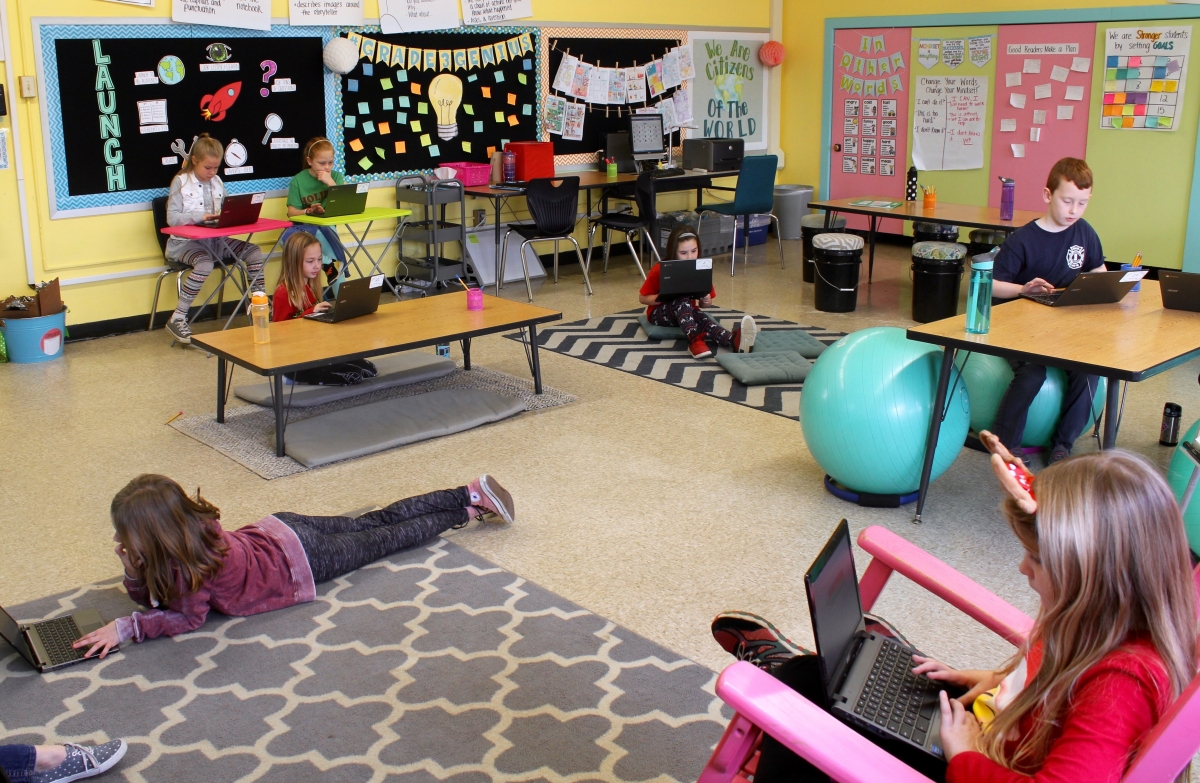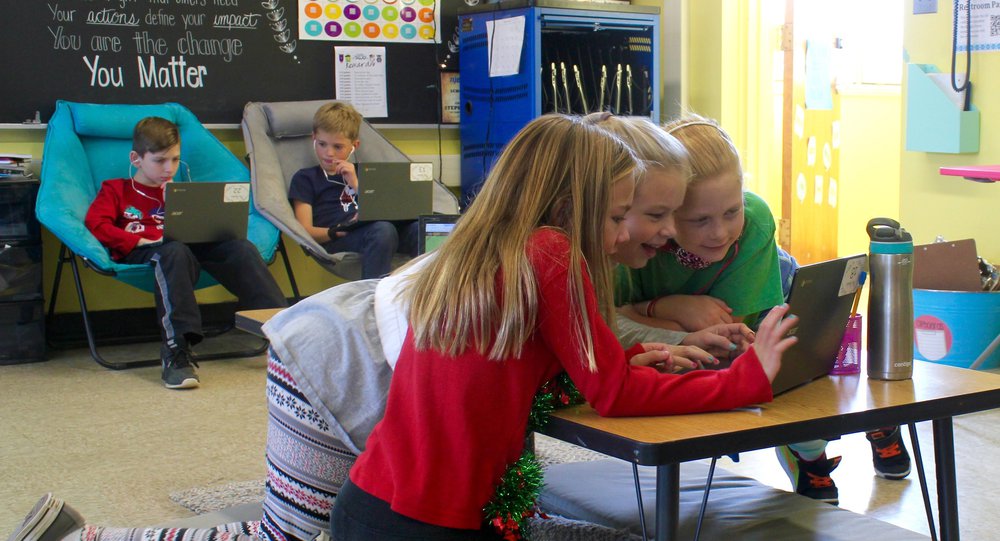Technology has completely transformed the face of education and how we learn as human beings. Instant accessibility and a connected revolution has reshaped how we access, interact, and share information. So it is no surprise that as we learn and lead in a technology infused society, our daily practices need to shift as well to mirror the type of learner we want each of our students to become.
Our instructional practices and culture for learning should develop innovative, critical thinkers, who are empowered to self-direct their own learning, set their own goals, and harness technology to help them get there. As we continue to develop the instruction and leadership that will support this type of learning, we need to support teachers in their exploration of learning and leading in the digital age. It is ultimately our responsibility as educators to provide new and better learning opportunities for our students (and teachers) to be successful in a quickly changing global community.
Culture for Learning
School culture should be a place where ideas are sparked, confidence is built, and learning thrives. We want to create an environment that promotes and sustains next generation digital learning. First and foremost, it is important to change the norms of your school and community to reflect the kind of shifts you want to make; one where every stakeholder has a shared vision for student success and understands the why behind students learning with technology.
Related Video: Personalizing Learning in the Classroom
Start by asking the question; Is this district, is this school, is this classroom a place where students want to be? Relationships are at the heart of everything in education. Underneath all the test scores and curriculum demands are people. People who need to be valued and feel as though what they are doing and the ideas that they have are important and they can make an impact. It is important to place value on cultivating meaningful relationships and promote an open culture for learning where everyone (admin, teachers, students, parents, and community members) are continually sharing ideas.
Model Risk Taking
Shifts in mindset from school leaders down to students, is something that should be not only encouraged, but modeled. It is important to develop the norm that as learners, we embrace struggles and celebrate successes. Negative associations with failure should be replaced with positive ones so teachers and students begin to understand that yes, they might (and probably will) fail… and that’s okay! In fact, not only is it okay, but it is welcomed! School leaders who shift their mindset and model this type of risk taking will develop tea chers who feel comfortable and supported in doing the same. This will ultimately lead to students who are open to taking calculated risks, who are not afraid to ‘fail forward’ and who learn to be resilient when they don’t succeed the first time.
chers who feel comfortable and supported in doing the same. This will ultimately lead to students who are open to taking calculated risks, who are not afraid to ‘fail forward’ and who learn to be resilient when they don’t succeed the first time.
Collaborative, Connected Learning
Build a community of connected learners. We want to continue to develop the norm that together, we can collaborate with other learners to find and solve problems within our schools, classrooms, communities, and the world. Utilizing collaborative technologies and the power of social media allows administration, teachers and students to create their own learning opportunities and connect and collaborate with peers both locally and globally. Encourage school leaders, teachers, and students to leverage that technology to become global citizens; connecting to the world around them to share, learn, engage, and grow as learners, and as people.
Related Story: Videoconferencing Fosters Global Understanding
Self-directed Learning and Time for Exploration
Teachers and students need to be given the opportunity to self-direct their learning and design their own path. Learning experiences should be centered around the individual and be motivated by their strengths, passions, and interests. The role of the educator needs to shift from being that all-knowing, primary source of information, to a facilitator of learning who provides personalized instruction and support in reaching their learning goals. We want to shift students from being consumers of information, to creators and collaborators. As educators, we need to give our students the time to be able to explore, struggle, co-construct knowledge, and creatively communicate that knowledge with the world. We want to cultivate students who can not only function in a digital environment, but flourish in it.
Related Story: Mixing Solutions for Peak Success
Be Transparent and Reflective
Share your story… because if you don’t, who's going to? Now, when I say share your story, I don’t mean only sharing the good, I mean sharing it all; the good, the bad, the epic fails. Reflection in the learning process plays a fundamental role in deeper learning. Promoting reflection through practices such as blogging will continue to cultivate that open culture of connected, digital learning. Continuously reflect on where you are now, and where you want to be.
- What worked?
- What didn’t work?
- How can you do better?
- How did you fail?
- More importantly, when you did fail, what did you do next?
Be authentic and be transparent about your learning journey.











